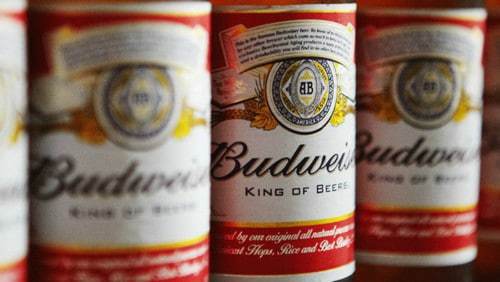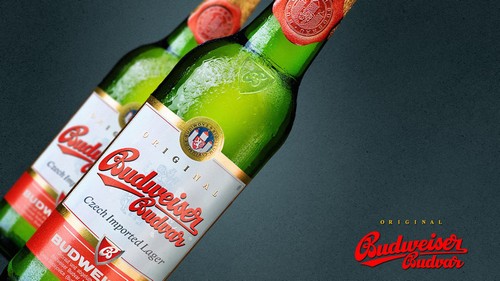Introduced in 1876 this American Brand is the biggest brand of the Anheuser-Busch InBev. in its portfolio. The Budweiser beers are filtered and are available worldwide in the draft and packaged forms.
The brand is no. 3 brand in the US and is one of the top 10 beer brands worldwide with the market share of 2.3% in the beer category worldwide. The offering of the brand is the result of 25000 American and Canadian crops along with barley malt, fresh verdant rice, and aromatic hops.
Table of Contents
Segmentation, targeting, positioning in the Marketing strategy of Budweiser–
Initially, the brand started its journey in the American market and later on popularised it other parts of the world based on the Race & religion and regional crops such as American & Canadian Crops.
Since Budweiser have only two brand offerings with limited SKU’s (stock keeping units) such as Budweiser and Select/select 55, so it uses selective targeting strategy to evaluate the potential & attractiveness of each segment in the market.
Positioning helps in understanding the mental map of the brand positioned competitively in the mind of the customers. It positions itself as a brand which is the friend of good & bad time through Stand By You Campaign.
SWOT analysis – Here is the SWOT analysis of Budweiser.
Mission-“To brew great beers that can not only be enjoyed responsibly but are also created with a low impact on the environment”
Vision- “Bringing people together in a Better World”
Tagline-“King of Beers”
Competitive advantage in the Marketing strategy of Budweiser–
1. Strong Parent company:
After the acquisition of SAB Miller in the year 2016 the parent company of the Budweiser i.e. Anheuser-Busch InBev has become the largest brewing company in the world and is considered one of the largest fast-moving consumer goods companies globally.
2. Unique ingredients:
Blend of hop varieties, finest two-row, and six-row barley malt, milled, polished rice has resulted in the distinct flavor of Budweiser. Budweiser source different types of barley from more than 2000 barley fields.
3. “America” Labelling:
The controversial advertisement of the brand in 2016 replacing the name Budweiser with America in the 12-ounce cans has popularised the brand although the parent firm is based out of Belgium.
BCG Matrix in the Marketing strategy of Budweiser-
Select, select 55 and Budweiser under the name of Bud & variants are the strategic business segments of Budweiser.
Out of these brands that are operational under Budweiser, the Budweiser is Stars in the BCG matrix due to easy acceptance in more than 85 countries globally. While other brands like Select, select 55 are the question mark in the BCG matrix.
Distribution strategy in the Marketing strategy of Budweiser–
The Company have 27 flagship breweries out of which 12 are in the US, 14 are based out in China and 1 in Canada for making top quality beer available worldwide.
Strategically located breweries help the Company to distribute its offerings in SKU’s (stock keeping units) like Kegs, bottles, Cans through E-tailors, Super Markets, and E-commerce websites. Through these points of sales, the company have distributed over more than 80 million Cans totaling 1.4 gallons
The signature 7-Step Brewing Process of the brand was created and perfected for more than 100 years ago which helped the company in producing quality beers consistently.
Brand equity in the Marketing strategy of Budweiser–
The brand Budweiser has been ranked 22nd in Forbes magazine list of world’s most valuable brand. The brand has been valued at $ 24.6 billion as of May 2017 (market capitalization value method) generating revenue of $ 11.10 billion.
The brands have associated itself with several events by sponsorship and associating thereby increasing the visibility of the market.
Competitive analysis in the Marketing strategy of Budweiser –
The Global beer market is being controlled by five major players who make more than 50% of the world’s beer Anheuser-Busch InBev, Carlsberg, Heineken, and China Resources Enterprise.
Budweiser competes on the basis of focused products line, availability, price, branding, markets served. It competes with brands such as Snow, Tsingtao, Skol, Heineken, Coors light, Yanjing etc.
Market analysis in the Marketing strategy of Budweiser–
Budweiser focuses on its existing market by creating a host of experiences and reward system such as Budweiser Swag, merchandise, Partnering with digital and sports and music events partners such as Ticketmaster, Lyft, Drizly etc.
The market is driven by the taste and innovative brewing process of the company through which it creates new customer by penetrating the current market or expanding its reach to new markets.
Customer analysis in the Marketing strategy of Budweiser –
The brand Budweiser serves customer segments such as Retail and B2B.
In B2B Segment Company makes its products available to Bars, Restaurants, Hotels Chains, and Super Market Chains. This segment is catered by either Sales team of the company or national distributors.
In Retail segment, although company have customers from age group 15 years and above but the majority of customers of the brand are in the age band of 45 years and above.
Liked this post? Check out the complete series on Strategies


Hi this is Michael Cataldo of Cataldo Builders I am looking for a Budweiser decal for the back of my RV and would like to know if i can get a incentive for advertising. I go to all the Nascar race’s and travel all over and I think it would be a great add opertunity and I can get my Bud decal on the back of my RV.